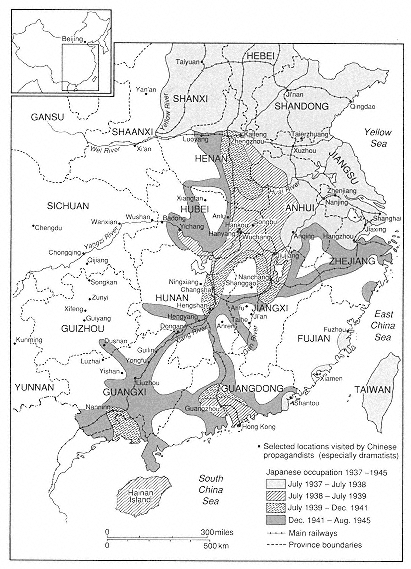Acknowledgments
In writing this book I have benefited from the support, advice, and encouragement of many individuals. My profound gratitude goes first to three historians. Joseph W. Esherick read the original manuscript with great care and offered numerous invaluable suggestions for improvement. R. David Arkush encouraged me to refine and refocus my arguments. And Arif Dirlik challenged me to reexamine the theoretical underpinnings of this study. Their advice has saved me from many errors and helped to make this a better book.
Two friends deserve special thanks. Mark A. Greene of the Minnesota Historical Society had the patience to review countless pages and to offer counsel and assistance when they were most needed. The text has benefited greatly from his constant probing and his remarkable sense of style. Paul Clark of the University of Auckland, New Zealand, also gave generously of his time and read the original draft with critical shrewdness.
Other constructive criticisms and good cheer came from Lyman P. Van Slyke, Charles W. Hayford, and Jeffrey C. Kinkley. They read the manuscript in whole or in part, and their trenchant comments provided the basis for some rewriting. My colleagues in the History Department at Carleton College, especially Robert E. Bonner, Diethelm Prowe, and Carl D. Weiner, generously shared with me their extensive knowledge of the resistance movements in Europe during the Second World War.
I owe a special debt of gratitude to the late Haldore Hanson, who provided valuable information about wartime Yan'an and other Communist border regions. I am also indebted to Zhu Jiefan, Pao-liang Chu, Shuen-shuen Hung, Perry Yu, Yuan Yimu, Robert E. Enten-
mann, Mariko Kaga, and Qiguang Zhao for bringing relevant materials to my attention.
A good many institutions helped keep this endeavor afloat. In particular, I would like to thank the National Endowment for the Humanities for a summer stipend in 1988 and a research fellowship in 1990. A grant from the Committee on Scholarly Communication with the People's Republic of China enabled me to conduct crucial interviews and collect much-needed materials in China in the fall of 1989. Carleton College assisted my research by granting me, through the Faculty Development Endowment Program, several awards in the past few years to finance two trips to Taiwan and facilitate the gathering of materials relevant to this project.
This study would not have been possible without generous assistance from many libraries and their staffs. In particular, I am grateful to the Hoover Institution's East Asian Collection at Stanford (where I began the research for this book in 1986), the Harvard-Yenching Library, the East Asian Library at the University of California at Berkeley, the East Asian Library at Columbia University, the National Library in Beijing, Beijing Normal University Library, Beijing University Library, Shanghai Library, Fudan University Library, and the Institute of Modern History Library at Academia Sinica in Taibei.
The staff of the University of California Press made work on this book a pleasure with their gentle guidance and meticulous attention to detail. I am especially grateful to Sheila Levine for her encouragement and enthusiasm for this project. Laura Driussi, Amy Klatzkin, and Monica McCormick provided editorial advice. Anne Canright copy-edited the manuscript with a keen eye to both style and presentation.
A note on format and sources is in order here. The pinyin romanization system has been used throughout (with the exception of Sun Yat-sen, whose Cantonese approximation is long familiar in the West). As for sources, this book makes use of an assortment of published and unpublished materials: wartime newspapers and magazines, official and unofficial pamphlets, plays, cartoons, diaries, memoirs, biographies, letters, and personal interviews. Many participants in China's War of Resistance (whose names appear in the appendix) gave me much help, information, and advice. One of the most rewarding experiences in writing contemporary history is the opportunity to engage in face-to-face dialogue with the subjects of one's study. As is evident throughout the book, talking to them shed new light on questions that texts alone cannot answer. Needless to say, all interpretations and
conclusions in this book are entirely my own, and I alone am responsible for any shortcomings that remain.
Finally, gratitude of a more personal kind must be recorded as well. My daughter, Ming-mei, and my son, Ming-yang, have the wonderful patience to tolerate an oftentimes preoccupied father, and I wish to thank them for bringing their joy and energy into my life. And, as always, I am immeasurably grateful to my wife, Wai-han Mak, for sharing together the good times and the hard, and for the countless ways she has given love and support to this project. It is to her that this book is dedicated.

China During the War of Resistance, 1937–1945
Based on The Cambridge History of China, vol. 13: Republican China, 1912–1949, pt.
2, ed. John K. Fairbank and Albert Feuerwerker (Cambridge: Cambridge University
Press, 9186), p. 549; Hong Shen, Kangzhan shinian lai Zhongguo de xiju yundong yu
jiaoyu (Shanghai: Zhonghua shuju, 1948), pp. 5–6; and Baqian li ly yun he yue—
Yanju jiudui huiyilu, ed. Yanju jiudui duishi bianji weiyuanhui (Shanghai: n.p., n.d.),
pp. 367–473.